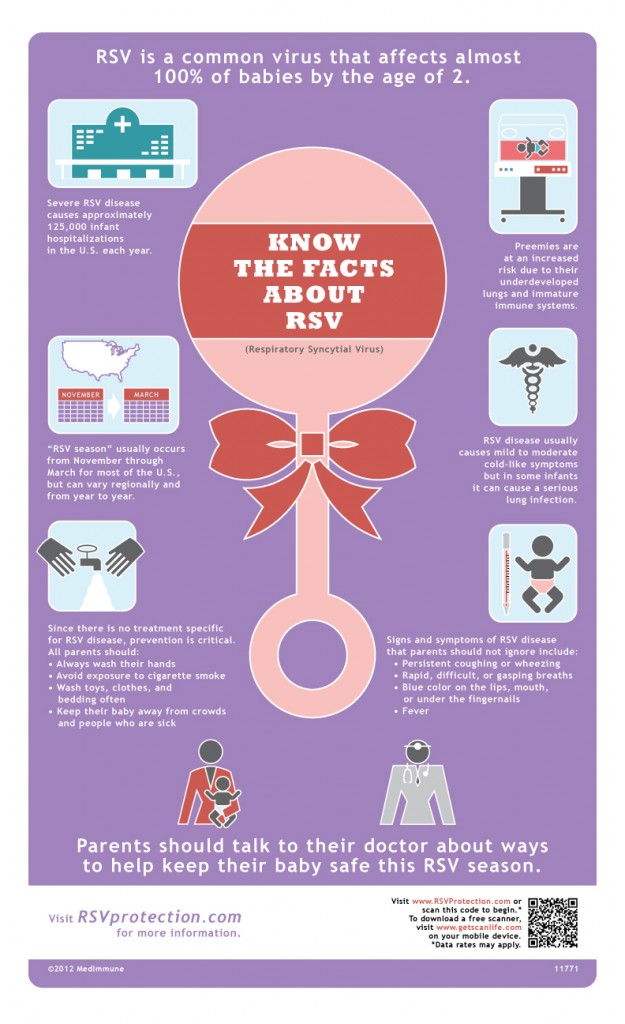Did you know that RSV affects two-thirds of all infants by age one and almost 100% of babies by age two?
100% of babies by the age two?! to me that number is very scary! When my kids were little I had no idea what RSV was. It wasn’t until my sister called me and said that my niece was in the hospital with RSV that I started researching RSV to learn more about it and find out how to protect my kids.
What is RSV:
RSV disease, or Respiratory syncytial virus, is the most common cause of bronchiolitis (inflammation of the small airways in the lung) and pneumonia in children under 1 year of age in the United States. The RSV season typically runs from November through March. RSV typically causes mild to moderate cold-like symptoms, but in some babies it results in a serious respiratory infection. Those most at risk for severe RSV include premature infants, as their lungs aren’t fully developed and they have fewer infection-fighting antibodies than full-term babies.
Below are symptoms of severe RSV infection that require immediate medical care:
- Coughing or wheezing that does not stop
- Fast or troubled breathing
- Spread-out nostrils and/or a caved-in chest when trying to breathe
- Bluish color around the mouth or fingernails
- Fever (especially if it is over 100.4°F in infants under 3 months of age)
An estimated that 82% of U.S. children aged six weeks to six years old, spend some amount of time in child care. Whether its one day a week or 5 days a week, the risks of spending time in a daycare or pre-school setting are the same — increased exposure to contagious germs and viruses. Daycare increases this risk of RSV spreading as children are constantly sharing toys, tables and high chairs as well as eating and napping in close quarters.
Parents of preemies should be informed of the dangers of RSV, as well as the risks that certain child care settings can present. If possible, parents of high-risk babies may want to consider alternate options, such as nannies or in-home daycare centers, where exposure to dangerous germs can be minimized. Regardless of child care settings, it’s important for parents who believe their child may be at high-risk for RSV to speak with a doctor about prevention.
Because RSV can live on surfaces (doorknobs, countertops, toys, bedding) for several hours and is often spread through touching, hugging and kissing, all parents should take steps to prevent the spread of the virus.
Here are some ways that you, your child’s caregiver and loved ones can help prevent the spread of RSV:
 Wash your hands and child’s hands
Wash your hands and child’s hands- Keep toys, clothes, blankets, and sheets clean
- Clearly mark bottles/sippy cups by putting labels on them to help caregivers make sure that the babies are drinking out of their own bottles/sippy cups
- If your baby uses a pacifier make sure it is cleaned regularly
- Avoid crowds and other sick children during RSV season
- Avoid exposure to cigarette smoke
For more helpful information about RSV visit www.RSVProtection.com and follow #RSVProtection on Twitter.
“I wrote this review while participating in a campaign for Mom Central Consulting on behalf of MedImmune and I received a promotional item to thank me for my participation.”
